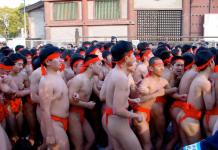5.1.1 External gas pipelines should be located in relation to buildings, structures and engineering networks in accordance with Appendices B and C.
Ground gas pipelines in embankment are equated to underground gas pipelines, and aboveground gas pipelines without embankment are equated to aboveground ones.
When laying on land in an embankment, the material and dimensions of the embankment should be taken on the basis of the heat engineering calculation, as well as ensuring the stability of the gas pipeline and the embankment.
When laying underground gas pipelines with a pressure of up to 0.6 MPa in cramped conditions, on certain sections of the route, between buildings and under the arches of buildings, as well as gas pipelines with a pressure of more than 0.6 MPa when they are brought together with detached ancillary buildings (buildings without the constant presence of people) it is allowed to reduce the distance by no more than 50% in cramped conditions and no more than 25% - in special natural conditions (see Appendices B and C). At the same time, in the areas of convergence and at a distance of at least 5 m in each direction from these areas, the following should be applied:
- for steel gas pipelines:
- seamless pipes;
- electrically welded pipes under 100% control by physical methods of factory welded joints;
- electrically welded pipes that have not passed the above control, laid in a protective case;
- for polyethylene gas pipelines:
- long pipes without connections;
- pipes of measured length, connected by butt welding with a heated tool, made on welding equipment of a high degree of automation, or connected with parts to the ZN;
- pipes of measured length, welded with welding equipment of medium degree of automation, laid in a case;
- pipes of measured length, welded with manual welding equipment with 100% control of joints by physical methods, laid in a case.
Mounting joints of steel gas pipelines must be 100% controlled by physical methods.
When laying gas pipelines in cramped conditions along railways, one should be guided by Appendix B.
When laying gas pipelines at a distance of less than 50 m from the railways of the common network and external railway sidings of enterprises at the approach section and at a distance of 5 m in each direction, the depth of laying must be at least 2.0 m. Butt welded joints must pass 100% control by physical methods.
In this case, polyethylene pipes must be made of PE 100 with a safety factor of at least 3.2 and 2.0 for gas pipelines laid on the territory of settlements and urban districts, and between settlements, respectively, and the wall thickness of steel pipes must be 2- 3 mm more than the calculated one. For gas pipelines with a pressure of up to 0.3 MPa inclusive, it is allowed to use polyethylene pipes made of PE 80 with a safety factor of at least 3.2.
It is allowed to lay gas pipelines with a pressure of more than 0.6 MPa in the settlement at the entrance to the industrial center (industrial zone), as well as in the undeveloped part of the settlement, if this does not contradict the layouts of capital construction objects provided for by the general plan of the settlement.
5.1.2. Gas pipelines should be laid underground.
In exceptional cases, above-ground laying of gas pipelines is allowed along the walls of buildings inside residential yards and quarters, as well as on certain sections of the route, including on sections of crossings through artificial and natural barriers, when crossing engineering networks. Such a laying of gas pipelines is allowed to be provided with appropriate justification and carried out in places where access of unauthorized persons to the gas pipeline is restricted.
Onshore gas pipelines with embankments can be laid under special soil and hydrological conditions. The material and dimensions of the embankment should be taken on the basis of the heat engineering calculation, as well as ensuring the stability of the gas pipeline and the embankment.
The height of the aboveground gas pipelines and the depth of the underground LPG gas pipelines should be taken as for gas pipelines of gas distribution networks and gas consumption of natural gas, with the exception of specified cases.
Laying of gas pipelines of the vapor phase of LPG is allowed low pressure along the walls of buildings in accordance with 5.3.1 and table 3.
The laying of gas pipelines, including LPG gas pipelines, if it is provided for by the functional requirements at the gas pumping station and the gas pumping station, should be provided above ground.
5.1.3 Laying gas pipelines in tunnels, collectors and channels is not allowed. An exception is the laying of steel gas pipelines with a pressure of up to 0.6 MPa in accordance with the requirements of SP 18.13330 on the territory of industrial enterprises, as well as in channels in permafrost soils under roads and railways and LPG gas pipelines under highways on the territory of a gas station.
5.1.4 Pipe connections should be permanent. Connections of steel pipes with polyethylene pipes can be detachable and in places where technical devices and gas-using equipment are installed. Detachable connections of polyethylene pipes with steel pipes in the ground should be provided provided that a case with a control tube is installed.
5.1.5 Gas pipelines at the points of entry and exit from the ground, as well as gas pipelines inlets to buildings should be enclosed in a case. The ends of the case at the points of entry and exit of the gas pipeline from the ground, the gap between the gas pipeline and the case at the gas pipeline inlets into buildings should be sealed with elastic material over the entire length of the case. The space between the wall and the case should be sealed with, for example, cement mortar, concrete, etc. for the entire thickness of the structure to be crossed (if possible).
Cases at the outlet and inlet of the gas pipeline from the ground, provided that it has a protective coating resistant to external influences, may not be installed.
5.1.6 Provision should be made for the entry of gas pipelines into buildings directly into the room in which the gas-using equipment is installed, or into an adjacent room connected by an open opening.
It is not allowed to lay gas pipelines through the foundations of buildings (except for the specified cases) and under the foundations.
Gas pipelines are not allowed to enter the premises of the basement and basement floors of buildings, except for the inlets of natural gas pipelines and the vapor phase of low-pressure LPG to single-family and locked houses.
In seismic areas, only underground gas pipeline entry into a non-seismic-resistant building is allowed:
5.1.7 Disconnecting devices on gas pipelines should include:
- in front of detached or blocked buildings;
- to disconnect risers of residential buildings above five floors;
- in front of outdoor gas-using equipment;
- before the points of gas reduction (PRG), except for the PRG of enterprises, on the branch of the gas pipeline to which there is a disconnecting device at a distance of less than 100 m from the PRG; at the exit from the PRG, looped by gas pipelines;
- on branches from gas pipelines to settlements, individual microdistricts, quarters, groups of residential buildings (with more than 400 apartments to a separate house), as well as on branches to industrial consumers and boiler houses;
- when crossing water barriers with two or more lines of the gas pipeline, as well as one line with a water barrier with a low water level of 75 m or more;
- at the intersection of railways of the general network and highways of categories I-II, if the disconnecting device that ensures the cessation of gas supply at the crossing section is located at a distance of more than 1000 m from the roads.
At the inlet of gas pipelines to the pump-compressor and filling compartments, a disconnecting device with an electric drive is provided outside the building at a distance of at least 5 and not more than 30 m from the building.
5.1.8 Disconnecting devices on overground gas pipelines laid along the walls of buildings and on supports should be placed at a distance (within a radius) from door and opening window openings at least, m:
- for low pressure gas pipelines of category IV - 0.5;
- for gas pipelines of medium pressure category III - 1;
- for high pressure gas pipelines of category II - 3;
- for high pressure gas pipelines of category I - 5.
Places of installation of disconnecting devices must be protected from unauthorized access to them by unauthorized persons.
Installation of disconnecting devices on the sections of transit laying of gas pipelines along the walls of buildings is not allowed.
Installation of disconnecting devices under balconies and loggias is also not allowed.
5.1.9 At the sections of connection to the gas distribution pipeline of gas pipelines-inputs to separate buildings for various purposes, apartment buildings, boiler and industrial consumers must be installed safety valves (controllers) of gas flow without a bypass hole (bypass hole for automatic pressure equalization). Gas flow controllers are installed on a gas pipeline - an inlet with a diameter of up to 160 mm inclusive with a pressure of 0.0025 MPa at the point of its connection to the distribution gas pipeline. In other cases, the question of the need and possibility of installing a gas flow controller is decided by the design organization. It is allowed to install a gas flow controller for a single-family house in agreement with the owner.
5.2 Underground gas pipelines
5.2.1 Laying of gas pipelines should be carried out at a depth of at least 0.8 m to the top of the gas pipeline or case. In those places where the movement of vehicles and agricultural machines is not envisaged, the depth of laying steel gas pipelines is allowed at least 0.6 m.
On landslide and erosion-prone areas, the laying of gas pipelines should be provided for a depth of at least 0.5 m below the sliding surface and below the border of the predicted destruction area.
5.2.2 The vertical distance (in the light) between the gas pipeline (case) and underground engineering networks and structures at their intersections should be taken in accordance with Appendix B.
5.2.3 At the intersection of gas pipelines with underground communication collectors and channels for various purposes, heating mains for channelless laying, as well as at the places where gas pipelines pass through the walls of gas wells, the gas pipeline should be laid in a case. At the intersection with heating networks, it is necessary to provide for the laying of gas pipelines in steel cases.
Cases for polyethylene gas pipelines of all pressures on the territory of settlements should be additionally installed at the intersection with underground utility networks located below the gas pipeline route.
The ends of the case should be brought out at a distance of at least 2 m in both directions from the outer walls of the structures and communications being crossed, when crossing the walls of gas wells - at a distance of at least 2 cm. The ends of the case should be sealed with waterproofing material.
At one end of the case, at the upper point of the slope (except for the intersection of the walls of the wells), a control tube should be provided that goes under the protective device.
In the annular space of the case and the gas pipeline, it is allowed to lay a service cable (communication, telemechanics and electrical protection) with a voltage of up to 60 V, intended for servicing gas distribution networks.
5.2.4 For the construction of gas pipelines, polyethylene pipes in accordance with GOST R 50838 and fittings in accordance with GOST R 52779 with a safety factor of at least 2.0 are used.
Laying of polyethylene gas pipelines with a pressure of up to 0.3 MPa inclusive in the territories of settlements (rural and urban) and urban districts should be carried out using pipes and fittings made of PE 80 and PE 100 polyethylene with a safety factor of at least 2.6.
When laying polyethylene gas pipelines with a pressure of over 0.3 to 0.6 MPa inclusive in the territories of settlements and urban districts, pipes and fittings made of PE 100 polyethylene with a safety factor of at least 3.2 must be used. On the territory of rural settlements, it is allowed to lay polyethylene gas pipelines using pipes and fittings made of PE 80 polyethylene with a safety factor of at least 3.2 or made of PE 100 polyethylene with a safety factor of at least 2.6 at a laying depth of at least 0.9 m to the top of the pipe.
The safety factor of polyethylene pipes and PE 80 polyethylene fittings used for the construction of gas pipelines outside settlements and urban districts (inter-settlement) must be at least 2.5.
When laying inter-settlement polyethylene gas pipelines with a pressure of up to 0.6 MPa inclusive, it is allowed to use pipes and fittings made of PE 80 and PE 100 polyethylene. less than 0.9 m to the top of the pipe.
When laying inter-settlement polyethylene gas pipelines with a pressure of over 0.6 to 1.2 MPa inclusively, pipes and fittings made of PE 100 polyethylene must be used. the installation depth must be at least 1.2 m to the top of the pipe. The laying of polyethylene gas pipelines with a pressure of over 0.6 MPa using PE 80 pipes is allowed provided that the installation depth is increased by at least 0.1 m.
For the construction of gas pipelines with a pressure of over 0.6 MPa, reinforced polyethylene pipes and fittings can be used. In this case, the laying depth should be at least 1.0 m to the top of the pipe, and when laying gas pipelines on arable and irrigated lands, the depth of laying should be at least 1.2 m to the top of the pipe.
It is allowed to lay polyethylene gas pipelines made of PE 100 with a pressure of over 0.6 to 1.2 MPa, inclusive, in the settlement at the entrance to the industrial center (industrial zone), as well as in the undeveloped part of the settlement, if this does not contradict the layouts of capital construction projects provided for by the general settlement plan.
For the construction of polyethylene gas pipelines, it is allowed to use connecting parts - one-piece joints (polyethylene - steel), provided that their suitability for use in construction is confirmed in the prescribed manner.
It is not allowed to lay gas pipelines from polyethylene pipes for transporting gases containing aromatic and chlorinated hydrocarbons, as well as the vapor phase of medium and high pressure LPG and at a gas pipeline wall temperature under operating conditions below minus 20 ° C.
The use of copper and reinforced polyethylene pipes for the transportation of the liquid phase of LPG is not allowed.
5.3 Aboveground gas pipelines
5.3.1 Aboveground gas pipelines, depending on the pressure, should be placed on supports made of non-combustible materials or along the building structures of buildings and structures in accordance with Table 3.
Table 3
| Placement of aboveground gas pipelines | Gas pressure in the gas pipeline, MPa, not more |
|---|---|
| 1 On freestanding supports, columns, overpasses, stacks, fences, etc., as well as on the walls of industrial buildings, including GNS and GNP | 1.2 (for natural gas); 1.6 (for LPG) |
| 2 Boiler houses, industrial buildings with rooms of categories C, D and D, public and domestic buildings for industrial purposes, as well as built-in, attached and roof boiler rooms to them: | |
| a) on the walls and roofs of buildings: | |
| degrees of fire resistance I and II, class of constructive fire hazard C0 | 1,2* |
| degree of fire resistance II, class of constructive fire hazard C1 and degree of fire resistance III, class of constructive fire hazard C0 | 0,6* |
| b) on the walls of buildings: | |
| degree of fire resistance III, class of constructive fire hazard C1, degree of fire resistance IV, class of constructive fire hazard C0 | 0,3* |
| degree of fire resistance IV, classes of constructive fire hazard C1 and C2 | 0,1 |
| 3 Residential, administrative and amenity buildings for non-production purposes, public, including administrative ones, as well as built-in, attached and roof boiler rooms to them, warehouse buildings of category B4 - D: | |
| on the walls of buildings of all degrees of fire resistance | 0,1** |
| in cases where the GRPSh is placed on the outer walls of buildings (only up to the GRPSh) | 0,3 |
| * The gas pressure in the gas pipeline laid along the structures of buildings should not exceed the values indicated in Table 2 for the respective consumers. ** It is allowed to lay gas pipelines with a pressure of up to 0.3 MPa, inclusively, along the walls and roofs of gasified residential, administrative and non-industrial buildings, public, including administrative buildings, to supply gas to roof boiler rooms. Notes (edit) 1 The height of the gas pipeline laying above the roof of the building must be at least 0.5 m. 2 Laying of LPG gas pipelines (medium and high pressure) is allowed along the walls of industrial buildings of gas pumping station and gas pumping station. |
|
5.3.2 Transit laying of gas pipelines of all pressures along the walls and over the roofs of public buildings, including administrative buildings, administrative and household buildings is not allowed.
It is forbidden to lay gas pipelines of all pressures along the walls, above and below the premises of categories A and B, except for the buildings of the GNS and GNP, determined by the fire safety standards.
In justified cases, transit laying of gas pipelines not higher than the average pressure with a nominal passage of up to 100 is allowed along the walls of one residential building not lower than the degree of fire resistance III, constructive fire hazard C0 and at a distance below the roof not less than 0.2 m.
In justified cases, the transit laying of gas pipelines through the territories of objects that are not gasified from this gas pipeline must be agreed with the owner (rightholder) of this object and the operating organization.
5.3.3 High-pressure natural gas pipelines should be laid along blank walls and sections of walls or at a height of at least 0.5 m above window and doorways, as well as other open openings of the upper floors of industrial buildings and administrative and utility buildings interlocked with them. The gas pipeline must be laid below the roof of the building at a distance of at least 0.2 m.
Natural gas pipelines of low and medium pressure can also be laid along the bindings or imposts of non-opening windows and cross the window openings of industrial buildings and boiler rooms filled with glass blocks.
5.3.4 The height of the laying of aboveground gas pipelines should be taken in accordance with the requirements of SP 18.13330.
5.3.5 On pedestrian and road bridges built of non-combustible materials, it is allowed to lay gas pipelines with a pressure of up to 0.6 MPa from seamless or electric-welded pipes that have passed 100% inspection of factory welded joints by physical methods. The laying of gas pipelines on pedestrian and road bridges built of combustible materials is not allowed. Laying a gas pipeline across bridges should prevent gas from entering the confined spaces of bridges.
5.4 Crossing water barriers and ravines by gas pipelines
5.4.1 Underwater and surface gas pipelines in places where they cross water barriers (rivers, streams, reservoirs, canals, etc.) should be placed at a horizontal distance from bridges in accordance with Table 4.
Table 4
| Water barriers | Bridge type | Horizontal distance between the gas pipeline and the bridge, not less, m, when laying the gas pipeline (downstream) | |||||
|---|---|---|---|---|---|---|---|
| above the bridge | below the bridge | ||||||
| from the surface gas pipeline with a diameter, mm | from an underwater gas pipeline with a diameter, mm | from the surface gas pipeline | from the underwater gas pipeline | ||||
| 300 or less | over 300 | 300 or less | over 300 | all diameters | |||
| Shipping freezing | All types | 75 | 125 | 75 | 125 | 50 | 50 |
| Shipping non-freezing | Also | 50 | 50 | 50 | 50 | 50 | 50 |
| Non-navigable freezing | Multi-span | 75 | 125 | 75 | 125 | 50 | 50 |
| Non-navigation non-freezing | Also | 20 | 20 | 20 | 20 | 20 | 20 |
| Non-navigable for gas pipelines: | One- and two-span | ||||||
| low pressure | 2 | 2 | 20 | 20 | 2 | 10 | |
| medium and high pressure | 5 | 5 | 20 | 20 | 5 | 20 | |
| NOTE Distances are from bridge protruding structures. | |||||||
5.4.2 Gas pipelines at underwater crossings should be laid with deepening into the bottom of the crossed water barriers. If necessary, according to the results of calculations for ascent, the pipeline is ballasted. The elevation of the top of the gas pipeline (ballast, lining) should be at least 0.5 m, and at crossings over navigable and floating water barriers - 1.0 m lower than the bottom profile predicted for a period of 25 years. When laying a gas pipeline using directional drilling, the mark should be at least 2.0 m below the predicted bottom profile.
When crossing non-navigable water obstacles, it is allowed to lay underwater gas pipelines made of prefabricated ballast-coated pipes in a protective shell, without deepening into the bottom, provided that their suitability for the specified purposes is confirmed in the prescribed manner.
5.4.3 On underwater crossings the following should be applied:
- steel pipes with a wall thickness of 2 mm more than the design one, but not less than 5 mm; polyethylene pipes and fittings made of PE 100, having a standard dimensional ratio of not more than SDR 11 with a safety factor of not less than 2.0.
When laying a gas pipeline with a pressure of up to 1.2 MPa using the directional drilling method, in all cases it is allowed to use PE 100 polyethylene pipes with a safety factor of at least 2.0.
At underwater crossings up to 25 m wide outside settlements, it is allowed to use polyethylene pipes and fittings made of PE 80 with SDR no more than SDR 11 in gas pipelines with a pressure of up to 0.6 MPa.
When laying a gas pipeline with a pressure of up to 0.6 MPa using the directional drilling method, in all cases it is allowed to use polyethylene pipes made of PE 80 with SDR no more than SDR 11.
5.4.4 The height of the laying of the above-water passage of the gas pipeline from the design level of the rise of water or ice drift [high water horizon (GWV) or ice drift (GVL)] to the bottom of the pipe or superstructure should be taken:
- at the intersection of ravines and beams - not less than 0.5 m above the hot water supply with 5% coverage;
- when crossing non-navigable and non-floating rivers - at least 0.2 m above the GWV and GVL of 2% supply, and if there is a grubber on the rivers - taking it into account, but not less than 1 m above the GWV of 1% supply (taking into account the surge waves);
- when crossing navigable and floating rivers - not less than the values established by the design standards for bridge crossings on navigable rivers.
Stop valves should be placed at a distance of at least 10 m from the boundaries of the crossing or areas prone to erosion or landslides. The places where the gas pipeline crosses the high water horizon with 10% coverage are taken as the border of the crossing.
5.5 Crossing of railway and tram tracks and highways by gas pipelines
5.5.1 Distances horizontally from the intersection of underground gas pipelines tram and railway tracks, highways, main streets and roads must be, at least, m:
- to bridges and tunnels on the railways of general networks and external railway sidings of enterprises, tram lines, motor roads of categories I-III, main streets and roads, as well as to pedestrian bridges, tunnels through them - 30, and for internal sidings of enterprises , highways of categories IV-V and pipes - 15;
- to the zone of the turnout (the beginning of the wits, the tail of the crosspieces, the points of connection to the rails of the suction cables and other intersections of the track) - 4 for tram tracks and 20 - for the railways;
- to the overhead supports - 3.
It is allowed to reduce the above distances in agreement with the organizations in charge of the crossed structures.
5.5.2 Underground gas pipelines of all pressures at intersections with railway and tram tracks, highways of categories I-IV, as well as with main streets and roads should be laid in cases. In other cases, the question of the need for the device of cases is decided by the design organization.
Cases must meet the requirements for strength and durability. A test tube should be provided at one end of the case, which extends under the protective device.
5.5.3 The ends of the cases when gas pipelines cross the railways of the common network and external access railway lines of enterprises should be taken out at a distance from them not less than the established SNiP 32-01. When laying inter-settlement gas pipelines in cramped conditions and gas pipelines on the territory of settlements, it is allowed to reduce this distance to 10 m, provided that an exhaust plug with a sampling device is installed at one end of the case, brought out at a distance of at least 50 m from the foot of the embankment, excavation of the roadbed (axle of the extreme rail at zero marks).
When crossing by underground gas pipelines, the ends of the cases should be located at a distance:
- at least 2 m from the bottom of the subgrade (the axis of the extreme rail at zero marks) of the tramway, internal access railway lines of enterprises;
- not less than 2 m from the curb, shoulder, foot of the slope of the embankment of highways, main streets and roads;
- not less than 3 m from the edge of drainage structures (ditch, ditch, reserve).
In other cases, the ends of the cases should be spaced apart:
- at least 2 m from the end rail of the tramway and internal access railway lines of enterprises, as well as from the edge of the carriageway of streets;
- not less than 3 m from the edge of the drainage structure of roads (ditch, ditch, reserve), but not less than 2 m from the foot of the embankments.
When gas pipelines cross the railways of the common network and external access railway lines of enterprises, the depth of laying the gas pipeline must comply with the requirements of SNiP 32-01.
In other cases, the depth of laying the gas pipeline from the foot of the rail or the top of the road surface and main streets and roads from the bottom of the embankment to the top of the case must comply with safety requirements, but not less than, m:
- 1.0 - when designing gaskets in an open way;
- 1.5 - when designing a punching or directional drilling and shield boring method;
- 2.5 - when designing a gasket by the puncture method.
When designing the laying of a gas pipeline by other methods, the depth of laying a gas pipeline is taken taking into account the requirements of technical and operational documentation and ensuring safety.
The laying of gas pipelines in the body of embankments of roads and main streets is not allowed, except for the specified cases.
5.5.5 Wall thickness of pipes of a steel gas pipeline when it crosses railway tracks common use should be 2-3 mm higher than the calculated one, but not less than 5 mm at a distance of 50 m in each direction from the foot of the embankment slope (the axis of the outer rail at zero marks).
For polyethylene gas pipelines on these sections and at the intersections of I-III categories of highways, main streets and roads, pipes and fittings with SDR no more than SDR 11 with a safety factor of at least 3.2 for gas pipelines laid in the territories of settlements and urban districts must be used , and not less than 2.5 and 2.0 - for inter-settlement gas pipelines made of PE 80 and PE 100, respectively.
At the same time, cases made of non-metallic and steel pipes should be used on gas pipelines.
5.6 Additional requirements for gas pipelines in special conditions
5.6.1 Special conditions include heaving (except for weakly heaving), subsidence (except for type I subsidence), swelling (except for weakly swelling), permafrost, rocky, eluvial soils, areas with seismicity over 6 and 7 points, undermined (except for group IV) and karst areas (except for areas where, according to the karst assessment conclusion, no anti-karst measures are required), as well as other soil and man-made conditions, under which negative impacts on the gas pipeline are possible.
For cities with a population of more than 1 million people with a seismicity of more than 6 points, as well as cities with a population of more than 100 thousand people with a seismicity of more than 7 points, gas supply should be provided from two sources - main gas distribution stations or more with their placement in opposite sides of the city ... At the same time, gas pipelines of high and medium pressure should be designed as looped-back ones with their division into sections by disconnecting devices.
5.6.2 Crossings of gas pipelines through rivers up to 80 m wide, ravines and railway tracks in excavations, laid in areas with a seismicity of more than 7 points, should be provided for aboveground. Limiters of movement of the gas pipeline supports must ensure its free movement and exclude the possibility of discharge from the supports. In justified cases, it is allowed to lay gas pipelines from polyethylene pipes with a protective sheath.
5.6.3 When designing underground gas pipelines in seismic areas, in undermined and karst areas, at intersections with other underground utilities, at the bends of gas pipelines with a bend radius of less than five diameters at the network branch points, the transition from underground to aboveground, the location of permanent connections ( polyethylene - steel), as well as within settlements on linear sections of steel gas pipelines, control pipes should be provided every 50 m.
5.6.4 In soils of varying degrees of heaving, as well as in bulk soils with heaving properties, the depth of gas pipelines to the top of the pipe must be at least 0.9 of the standard freezing depth, but not less than 1.0 m. This requirement applies to areas with unequal degree of heaving and for distances equal to 50 nominal diameters of gas pipelines on both sides of their border.
With uniform heaving of soils, the depth of the gas pipeline to the top of the pipe should be, m:
- not less than 0.7 of the standard freezing depth, but not less than 0.9 for medium porous soils;
- not less than 0.8 of the standard freezing depth, but not less than 1.0 for strongly and excessively heaving soils.
5.6.5 For LPG tank installations with underground tanks designed under special conditions, an overground laying of liquid and vapor phase gas pipelines connecting the tanks should be provided.
5.6.6 With a seismicity of more than 7 points, in undermined and karst areas, in areas of permafrost for polyethylene gas pipelines, the following should be used: pipes and fittings made of PE 100 with SDR no more than SDR 11 with a safety factor of at least 3.2 for gas pipelines, laid on the territories of settlements and urban districts, and at least 2.0 - for inter-settlement gas pipelines. Under the specified special conditions, it is allowed to use pipes and fittings made of PE 80 with a safety factor of at least 3.2 in polyethylene gas pipelines with a pressure of up to 0.3 MPa. When laying gas pipelines in rocky soils, polyethylene pipes with a protective sheath in accordance with GOST R 50838 should be used. Welded butt joints must be 100% controlled by physical methods.
5.6.7 When designing gas pipeline inlets into buildings, compensation for the gas pipeline should be provided taking into account possible displacements (settlements, buckling) of buildings and the gas pipeline itself.
5.7 Rehabilitation of worn out underground steel gas pipelines
5.7.1 For restoration (reconstruction) and overhaul of worn out underground steel gas pipelines, the following are used:
- on the territory of settlements and urban districts:
- at pressures up to 0.3 MPa inclusive - broaching of pipes made of PE 80 and PE 100 polyethylene with a safety factor of at least 2.6 without welded joints or connected using parts with ZN, or butt-welded using high-grade welding equipment automation;
- at a pressure above 0.3 to 0.6 MPa inclusive - broaching of pipes made of polyethylene PE 80 and PE 100 with a safety factor of at least 3.2 without welded joints or connected using parts with ZN or butt welding using welding equipment high degree of automation;
- at a pressure of up to 1.2 MPa inclusive - lining the cleaned inner surface of gas pipelines with a synthetic fabric hose on a special two-component glue, subject to confirmation in the established manner of their suitability for these purposes at the specified pressure or in accordance with the standards (technical conditions), the scope of which extends to given pressure;
- outside settlements and urban districts:
- at pressures up to 0.6 MPa inclusive - broach in the gas pipeline of pipes made of polyethylene PE 80 and PE 100 with a safety factor of at least 2.6 without welded joints or connected using parts with ZN or butt welding using welding equipment of a high degree of automation;
- at a pressure above 0.6 to 1.2 MPa inclusive - broaching of pipes made of polyethylene PE 100 with a safety factor of at least 2.0 without welded joints or connected using parts with ZN or butt welding using welding equipment of a high degree of automation ... The space between the polyethylene pipe and the steel worn out gas pipeline (frame) with a pressure of more than 0.6 to 1.2 MPa, inclusive, must be filled (if possible) along the entire length with a sealing (sealing), for example, foam material;
- at a pressure of up to 1.2 MPa inclusive - lining the cleaned inner surface of gas pipelines with a synthetic fabric hose on a special two-component glue, subject to confirmation in the established manner of their suitability for these purposes at the specified pressure or in accordance with the standards (technical conditions), the scope of which extends to given pressure.
When broaching, polyethylene pipes are used without a protective sheath, with a protective sheath, with coextrusion layers.
For restoration (reconstruction) and overhaul of worn-out underground steel gas pipelines outside and on the territory of settlements and urban districts, other reconstruction technologies are allowed: pulling polyethylene pipes with short pipes connected to each other into a long pipe, reduced in diameter, pulling thin-walled profiled pipes SDR 21 and SDR 26, the laying of polyethylene pipes instead of worn out steel pipes by their destruction or other technologies, subject to confirmation in the established order of their suitability for these purposes for the specified pressure.
5.7.2 Recovery and overhaul worn-out steel gas pipelines can be carried out without changing the pressure, with an increase or decrease in pressure compared to the pressure in the existing gas pipeline.
At the same time, it is allowed to save:
- intersections of rehabilitated areas with underground utilities without installing additional cases;
- the depth of the restored gas pipelines;
- the distance from the restored gas pipeline to buildings, structures and networks of engineering and technical support according to its actual location, if the pressure in the restored gas pipeline does not change or when the pressure in the restored gas pipeline rises to 0.3 MPa.
The restoration of worn-out steel gas pipelines with the possibility of increasing pressure to high pressure is allowed if the distances to buildings, structures and engineering networks meet the requirements for a high-pressure gas pipeline.
Aboveground gas pipelines should be laid on free-standing supports, stacks and columns made of non-combustible materials or along the walls of buildings. In this case, laying is allowed:
On freestanding supports, columns, ladders and stacks - gas pipelines of all pressures;
On the walls of industrial buildings with rooms related to fire hazard categories G and D - gas pipelines with a pressure of up to 0.6 MPa;
On the walls of public and residential buildings of at least 3 degrees of fire resistance - gas pipelines with a pressure of up to 0.3 MPa;
On the walls of public buildings and residential buildings of 4-5 degrees of fire resistance - low pressure gas pipelines with a nominal pipe diameter of no more than 50 mm. The height of laying gas pipelines along the walls of residential and public buildings should be taken in agreement with the operating organization.
It is prohibited to lay transit gas pipelines:
On the walls of buildings of children's institutions, hospitals, sanatoriums, cultural, entertainment, leisure and religious institutions - gas pipelines of all pressures;
On the walls of residential buildings - medium and high pressure gas pipelines.
The connection of underground steel gas pipelines-inputs with the riser of the above-ground (basement) input must be welded using bent or steeply bent branches. Welded butt joints in the sections of underground gas pipelines-inputs must be checked by non-destructive testing methods.
High-pressure gas pipelines up to 0.6 MPa are allowed to be laid along the walls, over windows and doorways of one-story buildings and over the windows of the upper floors of industrial buildings with rooms classified as fire hazard categories D and D, as well as buildings of detached boiler rooms.
It is not allowed to provide detachable connections and shut-off valves on gas pipelines under balconies and under window openings of residential and public buildings.
In a free area outside the passage of vehicles and the passage of people, it is allowed to lay gas pipelines on low supports at a height of at least 0.5 m, provided that one or more pipes are laid on the support. Gas pipelines in places where they exit from the ground should be enclosed in cases, the above-ground part of which should be at least 0.5 m. The end of the above-ground parts of the cases must be sealed with bitumen to prevent atmospheric precipitation from entering the inter-tube space.
Distance to buildings and structures see table
In places where people pass, the height of the gas pipeline on the supports is 2.2 m.
When laying the gas pipeline on supports closer than 2 m to the edge of the carriageway, a protective fence must be provided. The minimum distance of the protective gas pipeline to buildings should be at least 2 m. Gas pipelines are fastened to the supports using clamps.
Allowable spans between supports:
Pipe d- 20mm - 3 m
25mm - 3.5m
The gas pipeline is laid along the walls using brackets according to the 5.905-8 series (Fastening the gas pipeline along the walls of the building). The distance between gas lines and walls should provide easy access for inspection and repair.
To combat corrosion, metal structures and pipes are painted twice with a preliminary application of a primer.
Insulating flanges. Purpose and place of installation.
Insulating flange connection (IFS). Protection of gas pipelines with the help of IFS and inserts consists in the fact that the gas pipeline is divided into separate sections, due to which the conductivity of the pipe decreases, and at the same time the current flowing through the gas pipeline decreases and the solution of the issue of their protection is simplified.
Installation of EIF at the inputs provides for the impossibility of electrical contact between the house and the gas pipeline. Installation of EIF on gas pipelines - inputs into the house not higher than 2.2 m (usually 1.6-1.8 m from the ground for ease of maintenance).
Flange connections when installing valves, compensators must be bridged with permanent jumpers.
Placement of disconnecting devices on the gas pipeline.
Disconnecting devices on gas pipelines should include:
At the inputs, residential, public, industrial buildings, in front of external gas-consuming installations (mobile boilers, bitumen-cooking boilers, ovens for drying sand and burning building materials, etc.)
At the inputs to the hydraulic fracturing, at the outputs from the hydraulic fracturing with looped gas pipelines in systems with two or more hydraulic fracturing;
On the branches of inter-settlement gas pipelines to settlements or enterprises;
On branches from gas distribution pipelines to individual microdistricts, neighborhoods and individual groups of residential buildings;
For sectioning distribution pipelines of medium and high pressure for the possibility of performing emergency and repair work;
When gas pipelines cross water barriers, as well as one line with a water barrier width with a low-water horizon of 75 m or more;
When gas pipelines cross the railways of the general network and highways of categories 1 and 2, disconnecting devices should be placed:
In front of the territories of industrial, municipal and other enterprises.
Disconnecting devices on external gas pipelines should be placed in wells, ground fireproof cabinets or fences, as well as on the walls of buildings. A well-free underground installation of disconnecting devices connected by welding, intended for a well-free installation and requiring no maintenance, is allowed.
Disconnecting devices intended for installation on the walls of buildings should be placed at distances from doorways and opening window gaps, at least, m:
For low pressure gas pipelines - 0.5 m;
For gas pipelines of medium pressure horizontally - 1.0 m;
For high pressure gas pipelines up to 0.6 MPa horizontally -3.0 m.
The distance from the disconnecting devices on the gas pipeline placed on the walls of the buildings to the intake ventilation devices must be at least 5 m horizontally. When the disconnecting devices are located at a height of more than 2.2 m
platforms made of non-combustible materials with ladders should be provided.
Purpose, device of shut-off and control valves?
Industrial pipeline fittings are:
1.locking
2. regulating
3. safety
4. control
Shut-off valves are designed to turn on and off individual sections of pipelines during operation. It includes taps, valves, gate valves.
Control valves are designed to change the pressure or temperature, or the flow rate of the transported medium.
Safety valves are designed to protect pipelines, gas equipment, containers from unnecessarily
high pressure, as well as to maintain the required pressure in the pipeline.
The shut-off valves must be airtight with respect to the external environment. Gates, taps, gate valves and rotary gates provided for gas supply systems as shut-off valves (shut-off devices) must be designed for hydrocarbon gases. The tightness of the gates must correspond to class 1 in accordance with GOST 9544.
Valves and butterfly valves shall have swing stops and open-close position indicators.
The valves are made of gray cast iron, ductile iron, carbon steel, copper-based alloys.
Shut-off valves in accordance with GOST 4666 must be marked on the body and have a distinctive color. Marking must contain the manufacturer's trademark, nominal or working pressure, nominal bore and flow direction indicator, if necessary.
KPO on underground gas pipelines. Terms of inspection of gas pipelines. Paperwork.
Underground gas pipelines (made of metal and polyethylene pipes) in operation must undergo technical inspection, incl. and complex instrumental examination. KPO, with the help of devices according to specially developed instructions, and, if necessary, drilling is also carried out. During technical inspection
gas pipelines, the actual location of gas pipelines, the state of structures and equipment on them, tightness, the state of the protective coating and electrochemical protection must be determined.
When performing KPO, the following are checked:
location and, if necessary, the depth of the gas pipeline;
tightness of the gas pipeline;
continuity and condition of the protective coating.
Technical inspection of underground steel gas pipelines is carried out:
with a service life of up to 25 years - at least once every 5 years. The first one a year after commissioning;
when operating over 25 years and before the expiration of the amortization period of operation - at least once every 3 years;
when they are included in the overhaul or replacement plan, as well as when the protective coating is lower than the "very reinforced" type - at least once a year.
Extraordinary KPO gas pipelines must be carried out:
In the event that the service life exceeds for steel gas pipelines - 40 years, for semi-finished ones - 50 years;
When detecting leaks or ruptures of welded joints, through corrosion damage;
When the potential "gas pipeline-ground" decreases to values below the minimum permissible, subject to a break in the operation of electrical protection installations for more than 1 month - in the zones of influence of stray currents and more than 6 months - in other cases provided for by DSTU B V.2.5-29: 2006 " Engineering equipment houses and structures. External networks and facilities. Gas supply systems. Underground steel gas pipelines. General requirements to corrosion protection ".
On gas pipelines with a protective coating below the "very reinforced" type, in addition to KPO, control pitting should be carried out to determine the condition of the pipes and the quality of welded joints. Technical inspection of the condition of polyethylene gas pipelines is carried out within the time frame established for steel gas pipelines.
At KPO, a worksheet is drawn up 2 copies, one is given to the master of the network section.
Pitting on a gas pipeline. Purpose of pitting. The order of the work. Registration of documentation.
Inspection of underground steel gas pipelines in order to determine the state of the protective coating, where the use of devices is hampered by industrial interference, is carried out by opening control pits on the gas pipelines with a length of at least 1.5 m every 500 m.
The places of opening the control pits, their number in the zones of industrial interference are determined by the gas company or the company operating the gas facilities on its own.
For visual inspection, areas are selected that are subject to the greatest corrosion hazard, the intersection of gas pipelines with other underground utilities, condensate collectors. At the same time, at least one pit should be opened for every kilometer of gas distribution pipelines and for every 200 m - for a yard or intra-block gas pipeline, but at least one hole for a driveway, yard or block.
Checking the tightness and detecting places of gas leaks from underground gas pipelines during the period of freezing of the soil, as well as in areas located under improved road surfaces, should be carried out by drilling wells (or pinning), followed by taking air samples from them.
On gas distribution pipelines and inlets, wells are drilled at the joints. In the absence of the location of the joints, the wells should be drilled every 2 m.
The depth of their drilling in winter should be no less than the depth of freezing of the soil, in the warm season - correspond to the depth of pipe laying. Wells are laid at a distance of at least 0.5 m from the gas pipeline wall.
When using highly sensitive gas detectors, it is allowed to reduce the depth of the wells and place them along the axis of the gas pipeline, provided that the distance between the top of the pipe and the bottom of the well is at least 40 cm.
The use of open fire to determine the presence of gas in wells is not allowed.
Pit inspection of polyethylene gas pipelines is carried out only in places where steel inserts are installed.
At least 1 insert is checked for 1 km of gas distribution pipelines and for each quarterly distribution. To be able to inspect the joints of the joints of a polyethylene gas pipeline with a steel insert, the length of the pit should be 1.5-2 m. The opening of the pits is performed using mechanisms or manually. Insulation and metal inspection of steel inserts must be carried out at least once every 5 years.
Based on the results of a technical inspection of steel and polyethylene gas pipelines, a protocol should be drawn up, in which, taking into account the identified defects and an assessment of the technical condition, an opinion should be given on the possibility of further operation of the gas pipeline, the need for the timing of its repair and replacement. Information about the work performed and the results of the survey is entered into the passport of the gas pipeline.
2-3215/2015
SOLUTION
IN THE NAME OF THE RUSSIAN FEDERATION
Oktyabrsky District Court of the city of Kirov, composed of
judge S.A. Starodumova,
under the secretary E.S. Kultysheva,
Having considered in open court a civil case at the suit of G.A. Prokasheva. to JSC Gazprom gazoraspredelenie Kirov on the obligation to replace the expired gas pipeline,
U S T A N O V I L:
Prokasheva G.A. applied to the court with a statement of claim against OAO Gazprom Gazoraspredelenie Kirov represented by its branch in Kirov on the obligation to replace the expired gas pipeline. In support of the claims, she indicated that the plaintiff lives in a house at:, built in 1972. In the same year, a gas pipeline to this house was put into operation, i.e. the gas pipeline was laid 43 years ago. According to clause 5.3.7 of the Safety Rules for facilities using liquefied petroleum gases, approved. By the Decree of the Federal Mining and Industrial Supervision of Russia dated May 27, 2003 No. 40, existing external gas pipelines must be subject to periodic by-passes, instrumental inspection, technical condition diagnostics, as well as current and overhaul repairs. Underground gas pipelines with a service life of: steel - 40 years; polyethylene - 50 years. Gas equipment ( technical devices) are subject to diagnostics after the service life established by the manufacturer, but not more than 20 years of service. In the event of a gas pipeline failure due to a leak, if there is damage to the gas pipeline, an explosion at home may occur. They can appear from loose connections, from damage to the gas pipeline itself (corrosion, panic effects). Diagnostics involves checking the wall thickness of the gas pipeline, the presence of corrosion. The gas pipeline can be laid not only by the underground method, but by aboveground and aboveground ones. According to clause 4.3 of SNiP 2.04.08-87 "Gas supply", the laying of external gas pipelines on the territory of settlements should be provided, as a rule, underground in accordance with the requirements of SNiP 2.07.01-89 *. Aboveground and aboveground laying of external gas pipelines is allowed inside residential areas and courtyards, as well as on other separate sections of the route. Clause 4.22. * Of the same SNiP stipulates that above-ground gas pipelines should be laid on free-standing supports, stacks and columns made of non-combustible materials and along the walls of buildings. In this case, it is allowed to lay: on free-standing supports, columns, ramps and a stack of gas pipelines of all pressures; along the walls of industrial buildings with rooms of categories B, D and D - gas pipelines with a pressure of up to 0.6 MPa (6 kgf / cm2); on the walls of public buildings and residential buildings not lower than III-IIIa degree of fire resistance - gas pipelines with a pressure of up to 0.3 MPa (3 kgf / cm2); on the walls of public buildings and residential buildings of IV-V degrees of fire resistance - low-pressure gas pipelines with a nominal pipe diameter, as a rule, no more than 50 mm, and when placing gas pressure regulators on the outer walls and other structures of these buildings - gas pipelines with a pressure of up to 0.3 MPa - in the areas before entering them into the regulators. The transit laying of gas pipelines is prohibited: along the walls of buildings of children's institutions, hospitals, schools and entertainment enterprises - gas pipelines of all pressures; along the walls of residential buildings - medium and high pressure gas pipelines. According to clause 4.1 * of the Code of Rules “Gas distribution systems. Updated edition of SNiP 42-01-2002 ", design, construction, overhaul, expansion and technical re-equipment of gas distribution and gas consumption networks should be carried out in accordance with the gas supply schemes developed as part of federal, interregional and regional programs for gasification of subjects Russian Federation in order to ensure the level of gasification of housing and communal services, industrial and other organizations envisaged by these programs. The construction of gas distribution networks and the reconstruction of worn-out steel gas pipelines should be carried out: using mainly polymer pipes and fittings (for example, made of polyethylene and its modifications, polyamides); with the installation of regulating and safety devices at each consumer; with laying gas pipelines in places of limited access. In gas consumption networks, the safety of gas use must be ensured by technical means and devices. When designing gas pipelines made of polyethylene and steel pipes, it is allowed to provide for their connection to existing gas pipelines without reducing the pressure. In accordance with clause 4.16 *, the operability and safety of operation of gas distribution and gas consumption networks and LPG facilities must be maintained and maintained through maintenance and repairs in accordance with operational documents, technical regulations, national standards and sets of rules approved by federal executive authorities, and other regulatory legal documents. The connection of gas pipelines without pressure reduction must be carried out using special equipment that ensures the safety of work according to the technologies and production instructions approved in the prescribed manner. As indicated in 5.1.2 *, gas pipelines should be laid underground. In exceptional cases, above-ground laying of gas pipelines is allowed along the walls of buildings inside residential yards and quarters, as well as on certain sections of the route, including on sections of crossings through artificial and natural barriers, when crossing engineering networks. Such a laying of gas pipelines is allowed to be provided with appropriate justification and carried out in places where access of unauthorized persons to the gas pipeline is restricted. To the plaintiff's numerous requests to the defendant about replacing the old underground gas pipeline with a gas pipeline along the facade of the building, the defendant replied that the gas pipeline was diagnosed in 2010 by a specialized organization Kostromadiagnostika LLC, and according to the conclusion, the gas pipeline is suitable for further operation. However, the conclusion itself was not presented. The presence of a gas pipeline on the land plot is the reason for the establishment, in accordance with the Rules for the protection of gas distribution networks, approved by the Decree of the Government of the Russian Federation of November 20, 2000 No. N 878, a security zone of the gas pipeline, within the boundaries of which it is prohibited (clause 14 of the Rules): to build production facilities; arrange warehouses, dig and cultivate the soil with agricultural and land reclamation tools and mechanisms to a depth of more than 0.3 meters, i.e. That is, residents of the first floors of the house cannot attach balconies. The plaintiff asks to oblige the defendant to replace the expired underground gas pipeline with a ground one, along the facade of the house .; recover from the defendant the costs of paying state fees and legal fees - 6,200 rubles.
Plaintiff Prokasheva G.A. and its representatives Shulepov A.B., Prokashev V.N. at the hearing supported the arguments and requirements of the claim. In addition, the court was explained that the diagnostics of the gas pipeline did not meet the requirements of the standards, the presented opinion was not trusted, it was falsified, since in fact the state of the gas pipeline in proper condition was not verified by the drilling method, their house was not indicated in the act. They believe that the underground gas pipeline violates their right as owners to use the land and build balconies. It is also believed that since there was no opening of the land plot, they fear corrosion on the gas pipeline, which poses a threat to life. An elevated gas pipeline is easier to control. They are not ready to bear the burden of payment for the replacement of the gas pipeline, because this is the property of Gazprom.
The representative of the defendant JSC "Gazprom Gazoraspredelenie Kirov" by proxy Sannikova E.S. She did not acknowledge the claims, explained to the court that the underground low-pressure gas pipeline, laid in the city of Kirov at the addresses: owned by JSC Gazprom Gazoraspredeleniye Kirov, is a distribution gas pipeline for supplying natural gas. Due to the fact that the underground low-pressure gas pipeline, including at the address, was put into operation in 1972, at the request of JSC Gazprom Gazoraspredelenie Kirov (formerly JSC Kirovoblgaz), technical diagnostics of the said underground gas pipeline was carried out for an assessment of the facility's compliance with the industrial safety requirements of KostromaDiagnostika LLC in 2010. Based on the results of the wellbore inspection, no damage to the welded joints of the gas pipeline was found during the examination, the insulating coating of the gas pipeline is good, and there is no corrosion of the surface layer of the pipe metal. According to conclusion No. 17.2010 / 0006-5-3, the low-pressure underground gas pipeline complies with the industrial safety requirements for it and is allowed for further operation. The safe operation period of the gas pipeline has been extended until October 2020, taking into account the results of this opinion. After the expiration of the specified period, it is necessary to conduct an industrial safety examination. Relocation of a low-pressure underground gas pipeline at the address is impractical, because according to conclusion No. 17.2010 / 0006-5-3, this underground low-pressure gas pipeline complies with the industrial safety requirements imposed on it and is approved for further operation. The removal of the gas pipeline to the facade of a residential building will contradict clause 4.7 of SP 42-101-2003, since the laying of gas pipelines on the territory of settlements is predominantly underground. When the gas pipeline is removed to the facade of a residential one, there is no possibility to restrict the access of unauthorized persons to the gas pipeline and to protect an indefinite circle of persons from accidents and the consequences of these accidents. Due to the fact that the underground gas pipeline is a distribution gas pipeline, when the gas pipeline is removed to the facade (a complex of construction and installation works) for some time, some of the residential buildings at the address will be left without gas supply services. JSC Gazprom gazoraspredelenie Kirov bears the burden of maintaining the specified gas pipeline (operation, maintenance, diagnostics, repairs, emergency dispatch support). In the event that a gas pipeline is removed for further operation on the facade of a residential building, these costs must be reimbursed to the owner of the gas pipeline at the expense of the owners who initiate the said removal. The submitted act of technical research in the period from 07/08/2015 to 09/17/2015 confirms the inspection of the entire gas pipeline, including the one passing through the land plot of the disputed house, since the gas pipeline is a single object. Prokasheva G.A. is asked to refuse. in the claim.
The representative of the third party - LLC MC "Paritet" Myshkin D.S. claims Prokasheva G.A. supported.
The court, having heard the parties, having examined the written evidence, came to the following.
DECIDED:
In meeting the claims Prokasheva G.A. to OJSC "Gazprom gazoraspredelenie Kirov" Kirov on the obligation to replace the expired gas pipeline to refuse
The decision can be appealed to the Kirov Regional Court through the Oktyabrsky District Court of the city of Kirov within a month from the date of the decision in the final form - October 6, 2015.
Judge S.A. Starodumova

Gas pipeline laying along the walls of buildings
Gasification is a complex process from a technological point of view, which should be carried out exclusively by professionals. The most important stage in laying a gas pipeline is its design taking into account the smallest details and a preliminary assessment of the specifics of the building. Do not forget about the equipment, without which it is impossible to mount a gas pipeline at a height (for example, rental of construction cradles). Within the framework of this stage, it is determined:
The location of the pipeline,
· Type of equipment,
· Locations of chimneys and ventilation openings.
Illiterate technical solutions can lead to serious problems regarding the safety of building residents and lead to insufficient functioning of the system. It is necessary to carry out work at a height using special equipment; in this case, you can use the service of renting construction cradles.
Gas pipelines along the walls: specifics of installation
This type of gasification refers to land-based. Its advantages are: unimpeded access to the system for service personnel at any time; they are less susceptible to deformation than underground; service can be performed without shutting down consumer access points.
Only low and medium pressure systems can be mounted on the outer walls of residential buildings and public facilities. At the same time, requirements are also imposed on the structure: the degree of fire resistance of the structure must be at least IV degree, the supports used in its construction are non-combustible and free-standing.
Lay low-pressure gas pipelines along the walls of residential buildings, the boundary diameter of the pipes is 50 mm.
For the installation procedure, you will need to rent front lifts in the absence of proper equipment. It is not recommended to install flanged or threaded connections under window openings, as well as at the bottom of balconies. It is necessary to protect the pipes from mechanical damage and unfavorable environmental conditions, cover them with heat-insulating material. The pipe must be installed at a slope (not less than 0.003); at the lowest point, structures must be installed to receive the accumulated condensate.
The pipes are installed using a welding machine, after fixing along the wall (observing the distance between its surface and the gas pipeline), the entire system is tested for the absence of gaps and holes. This reduces the risk of gas leakage, ensuring complete safety for users. The lease of front elevators, ordered from any reliable company, will greatly facilitate the process of installing the gas pipeline for specialists.
For gas supply from group installations, steel gas pipelines are used, laid underground and designed for a clean gas pressure of 3–5 kPa, and for gas-air mixtures - 1.5–3 kPa.
Underground gas pipelines. Tracing gas pipelines across the territory settlements, inside quarters or courtyards should provide the smallest length of gas pipelines and branches from them to residential buildings, as well as the maximum distance from above-ground structures (especially those with basements) and non-pressure underground communications (sewer pipes, channels for heat pipes and other containers through which it can spread gas). The routing of gas pipelines through undeveloped areas should be carried out taking into account the planning of their future development.
In accordance with the requirements of the current "Safety Rules in the Gas Industry" of the Gosgortekhnadzor of the Russian Federation, the horizontal distances between low-pressure gas pipelines (up to 5 kPa) and other structures must be clear, m, not less:
- to the foundation of buildings and structures, overpasses and tunnels - 2;
- supports for outdoor lighting, contact network and communication - 1;
- the axes of the extreme track of the 1520 mm railway track - 3.8;
- axes of the tram's outer path - 2.8;
- side stone of the street, road - 1.5;
- the outer edge of the ditch or to the foot of the embankment of the street, road - 1;
- foundations of supports for overhead power transmission lines with voltage up to 1 kV and outdoor lighting - 1, over 1 to 35 kV - 5, and above - 6;
- tree trunks - 1.5;
- shrubs - not standardized.
When laying gas pipelines between buildings and under the arches of buildings, as well as on certain sections of the route where the given distances cannot be maintained, it is allowed to reduce them to values that ensure the safety of all underground structures during the construction and repair of each of them. If it is necessary to reduce the distance, long-length seamless pipes with increased wall thickness are used; bent bends are used; welded joints are checked by physical control methods; pipes are protected against corrosion by highly reinforced insulation.
The minimum horizontal distances in the plan between the engineering underground networks in the clear should be, m, not less:
- to the water supply - 1;
- household sewerage - 1;
- drainage and rainwater drainage - 1;
- gas pipelines of low, medium, high pressure - 0.5;
- power cables up to 100 kV and communication cables - 1;
- heating networks and common collectors - 2.
Laying two or more gas pipelines in one trench is allowed on one or different levels(in steps). The distances between the gas pipelines must be sufficient for the installation and repair of pipelines, but not less than 0.4 m for pipes with a diameter of up to 300 mm.
The vertical distances in the light when crossing underground gas pipelines of all pressures with other underground structures and communications should be, m, not less:
- water supply, sewerage, drain, telephone sewerage, etc. - 0.15;
- heating network channel - 0.2;
- electric cable, telephone armored cable - 0.5;
- oil-filled electric cable (110–220 kV) - 1.
Rice. 5.2. Scheme of gas supply to an industrial enterprise from city gas pipelines of medium pressure. 1 - city distribution gas pipeline of medium (or high) pressure; 2 - gas pipeline input; 3 - gate valve with a compensator in a deep well; 4 - underground inter-shop gas pipelines of medium or high pressure; 5 - hydraulic fracturing and central point for measuring gas flow; 6 - underground intermediate pressure gas pipelines; 7 - crane; 8 - overhead gas pipelines laid along the wall of the building; 9 - cabinet GRU (SHRU); 10 - gate valve with a compensator in a deep well (shop shutdown device); 11 - fitting with a tap and a plug for taking a sample; 12 - purge gas pipeline; 13 - disconnecting device (valve) at the entrance to the shop; 14 - a tap in a shallow well; 15 - above-ground inter-shop gas pipelines laid along columns; 16 - U-shaped compensator; 17 - gate valve on the aboveground gas pipeline with a platform and a ladder for its maintenance; 18 - intrashop GRU.
Reducing the distance between the gas pipeline and the electric cable or armored communication cable is possible provided they are laid in the cases, while the clear distance between the gas pipeline and the wall of the case must be, m, not less: when laying the electric cable - 0.25; armored communication cable - 0.15, and the ends of the case should extend 1 m in both directions from the walls of the crossed gas pipeline.
Overhead gas pipelines. These gas pipelines are more accessible to the supervision of maintenance personnel, are less susceptible to deformations, and allow you to quickly eliminate possible malfunctions and carry out repair work without shutting down consumers. Low and medium pressure gas pipelines can be laid along the outer walls of residential and public buildings of at least IV degree of fire resistance and free-standing fireproof supports, and low pressure gas pipelines with a nominal pipe diameter of up to 50 mm - along the walls of residential buildings.
Aboveground gas pipelines should be designed taking into account the compensation of longitudinal deformations and, if necessary, when self-compensation is not ensured, provide for the installation of expansion joints (not stuffing box). The height of the gas pipeline should be selected taking into account the provision of its inspection and repair. Flanged or threaded connections on gas pipelines should not be provided under window openings and balconies of buildings. Gas pipelines laid along the outer walls of buildings, overpasses, supports, as well as risers at the exit from the ground, if necessary, must be protected from mechanical damage. Gas pipelines must have a slope of at least 0.003; devices for removing condensate must be installed at the lowest points. Thermal insulation must be provided for these gas pipelines.
The minimum horizontal clear distances from overground gas pipelines laid on supports to residential and public buildings should be at least 2 m. diameter of the gas pipeline, but not less than 100 mm. The distances between the supports of aboveground gas pipelines should be determined in accordance with the requirements of the current "Guidelines for the calculation of steel pipelines for various purposes."
Disconnecting devices. On gas pipelines, it is envisaged to install disconnecting devices at the inlets of gas pipelines in individual buildings or their groups (two adjacent buildings or more), as well as in front of external (open) gas-consuming installations. On underground gas pipelines, they should be installed in shallow wells with expansion joints. On gas pipelines with a nominal bore of less than 100 mm, mainly U-shaped expansion joints should be used. When steel reinforcement is connected to gas pipelines by welding, expansion joints are not installed.
Installation of disconnecting devices at the inputs of low pressure gas pipelines should be provided, as a rule, outside the building. For fittings located at a height of more than 2.2 m, platforms made of non-combustible materials with ladders or a remote drive should be provided. For maintenance of valves that are rarely used, it is allowed to provide for the use of a portable ladder.
When laying two or more gas pipelines in one trench, the installed shut-off valves must be displaced relative to each other by a distance that ensures ease of maintenance and repair.
Indoor gas pipelines. Inside the premises, gas pipelines are laid openly along the walls, parallel to the floor (ceiling). The length of LPG gas pipelines from risers to gas appliances is minimal. It is not allowed to cross living rooms with pipes, and when passing through walls - smoke and ventilation ducts. When attaching gas pipelines to walls, it is necessary to observe the distances that provide the possibility of inspecting and repairing gas pipelines and the valves installed on them. Installation of valves with a thrust nut towards the wall is unacceptable.
The relative position of gas pipelines and electrical wiring inside buildings must meet the following requirements:
- a distance of at least 10 cm must be maintained from an openly laid electrical wire (electrical wire) to the gas pipeline wall (it can be reduced to 5 cm when laying electrical wires in tubes);
- at the intersection of the gas pipeline with an open-ended electrical wire, the latter must be enclosed in a rubber or ebonite tube protruding 10 cm from each side of the gas pipeline;
- with a hidden electrical wire from the gas pipeline wall, a distance of at least 5 cm must be maintained, counting to the edge of the sealed groove.
At the intersection of the gas pipeline with other pipelines (water supply, sewerage), their pipes should not touch. To turn off the gas, in addition to the tap, taps are installed on each riser at the entrance to the apartment, in the staircase (with the stair riser), on the branch from the riser to the appliances in the kitchen and in front of each device. When the riser is located in the kitchen and only one gas appliance is installed in the apartment (a stove without a meter), a shut-off valve at the outlet from the riser can be omitted. Indoor gas pipelines must be made of steel pipes. The connection of pipes should be provided, as a rule, for welding. Threaded and flange connections are allowed only in the places of installation of valves and gas appliances. Detachable connections of gas pipelines must be accessible for inspection and repair.
Gas pipelines inside buildings and structures should be laid open. In the premises of consumer services, catering and laboratories, it is allowed to lay supply pipelines to individual units, gas appliances in a concrete floor, followed by sealing pipes with cement mortar. At the same time, anticorrosive insulation should be provided for the pipes. In the places where the gas pipeline enters the floor and exits it, cases should be provided that protrude above them by at least 3 cm.
In principle, the arrangement of gas pipelines for supplying industrial and municipal enterprises with increased gas consumption is distinguished by the possibility of using medium pressure. According to the "Safety Rules in the Gas Industry" and SNiP 42-01-02, inter-shop gas pipelines at industrial enterprises can be both underground and aboveground. The choice of the method for laying inter-shop gas pipelines depends on the degree of saturation of the territory with underground communications, the type of soil and coatings, the nature of building structures and buildings, the location of workshops that consume gas, and technical and economic considerations. As a rule, at the enterprises the preference is given to the above-ground laying of inter-shop gas pipelines.
Rice. 5.1. Gas supply scheme of the enterprise from the city low pressure gas pipeline. 1 - city distribution low pressure gas pipeline; 2 - gas pipeline input; 3 - gate valve with a compensator in a deep well; 4 - hydraulic valve; 5 - purge gas pipeline; 6 - fitting with a tap and a plug for taking a sample; 7 - underground interdepartmental (yard) low pressure gas pipelines; 8 - a tap in a shallow well.Gas supply schemes for enterprises, as well as methods for laying gas pipelines, are diverse. When choosing a scheme, it is necessary to be guided by the technical and economic requirements, as well as the requirements of reliability and safety: ensuring the necessary parameters of combustible gas (pressure and flow rate) in front of the gas burners of heating units; minimum capital and metal investments (minimum diameters and lengths of gas pipelines, the number of hydraulic fracturing and GRU); ensuring reliable and safe construction, installation and commissioning works, operation.
Depending on the gas flow and pressure, the operating mode of heating units, the territorial location of gas consumers at the enterprise and technical and economic indicators, and taking into account the design and operation practice, several typical gas supply schemes for industrial and municipal enterprises are distinguished.
Utilities with a relatively low gas consumption and heating units operating on low-pressure gas (kitchen factories, canteens, built-in heating boilers with sectional boilers, etc.), as a rule, are connected to city low-pressure gas pipelines or tank farms (for complexes autonomous gas supply with propane-butane mixtures) (Fig. 5.1).
The gas supply scheme consists of a gas pipeline input with a common shut-off device, inter-shop gas pipelines with shut-off devices in front of each workshop, purge gas pipelines and such elements as control tubes, control conductors, condensate traps (for wet gases), expansion joints, etc.
A general shutdown device (valve) is installed at the inlet of the gas pipeline. It is designed to turn off the gas supply during the repair or failure of the gas supply system. Purge gas pipelines are designed to remove air and gas-air mixture and fill the system with clean gas during the initial and subsequent (after repairs of inter-shop gas pipelines or long-term shutdown of the system) starts. To determine the quality of the purge, a fitting with a valve is installed on the purge gas pipeline to take a sample of the medium, the composition of which can be determined on the gas analyzer.
In the considered gas supply scheme, underground laying of gas pipelines is conventionally adopted. The diagram does not show condensate traps: for centralized gas supply, dried natural gas is used, and when using wet combustible gases, gas pipelines are laid with a slope and condensate traps are installed at low points of the system.
Medium and large industrial enterprises are connected to city distribution pipelines of medium or high pressure (Fig. 5.2). As an example, it is assumed that in shops 2 and 3 the heating units operate on medium pressure gas (the gas pressure in front of the burners of the units is assumed to be equal), and in shops 1 and 4 - on low pressure gas. After the general shutdown device on the inter-shop gas pipeline of the initial gas pressure, a gas control point (GRP) is installed, designed to reduce the gas pressure from high or medium to medium pressure required for heat units of shops 2 and 3, taking into account pressure losses. In the building of the hydraulic fracturing station, a central point for measuring the gas flow rate was installed, intended for the economic settlements of the enterprise with the supplier. In workshops 1 and 4 for the use of low pressure gas, an additional gas control unit (GRU) was installed.
For inter-shop gas pipelines, a mixed layout is adopted - underground and aboveground. Aboveground gas pipelines can be laid along the outer walls and fireproof coverings of industrial buildings with industries classified as fire hazard categories C, D and E, as well as along free-standing columns (supports) and overpasses made of non-combustible materials. Important note: high-pressure gas pipelines can be laid along the walls of industrial buildings only above the windows of the upper floors or along blank walls.
The diameters of gas pipelines are determined by hydraulic calculation at the maximum gas flow rate, taking into account the prospective growth in consumption associated with the development of the enterprise and the permissible pressure losses. All underground steel pipelines are protected against corrosion caused by soil and stray electric currents. For this, both passive and active protection measures are applied.
The features of autonomous gas supply systems using low and medium pressures include the predominant use of forced air burners, optimized for operation on low pressure gas. In this case, there is no need to reduce the pressure, as it is necessary to do when supplying from centralized natural gas pipelines (the pressure drop in the regulators reaches 0.1–0.2 MPa).
Table 5.5. Gas pressure in supply lines for different consumers
| Gas consumers | Gas pressure, MPa |
| Industrial buildings in which the value of gas pressure is due to production requirements | 1,2 |
| Other industrial buildings | 0,6 |
| Household buildings of industrial enterprises, detached, attached to production buildings and built into these buildings | 0,3 |
| Administrative buildings | 0,005 |
| Boiler rooms | |
| detached on the territory of industrial enterprises | 1,2 |
| detached on the territory of settlements | 0,6 |
| attached, built-in and roofed industrial buildings | 0,6 |
| attached, built-in and rooftop public, administrative and household buildings | 0,3 |
| attached, built-in and roof residential buildings | 0,005 |
| Public buildings (except for buildings in which the installation of gas equipment by the requirements of SNiP 2.08.02 is not allowed) and warehouse | 0,005 |
| Residential buildings | 0,003 |
Table 5.6. Gas pressure in overhead gas pipelines, depending on the class of consumers and location features
| Placement of aboveground gas pipelines | Gas pressure in the gas pipeline, MPa, not more |
| 1. On freestanding supports, columns, overpasses and shelves | 1.2 (for natural gas); 1.6 (for LPG) |
| 2. Boiler houses, industrial buildings with rooms of categories B, D and D and buildings of the GNS (GNP), public and domestic buildings for industrial purposes, as well as built-in, attached and roof boiler rooms to them: | |
| a) on the walls and roofs of buildings | |
| I and II degrees of fire resistance of fire hazard class C0 (according to SNiP 21-01) | 1,2* |
| II degree of fire resistance of class C1 and III degree of fire resistance of class C0 | 0,6* |
| b) on the walls of buildings | |
| III degree of fire resistance of class C1, IV degree of fire resistance of class C0 | 0,3* |
| IV degree of fire resistance of classes C1 and C2 | 0,005 |
| 3. Residential, administrative, public and domestic buildings, as well as built-in, attached and roof boiler rooms to them | |
| on the walls of buildings of all degrees of fire resistance | 0,005 |
| in cases where ShRP is placed on the outer walls of buildings (only up to ShRP) | 0,3 |
* - The gas pressure in the gas pipeline laid along the structures of buildings should not exceed the values indicated in Table 7.3. for the respective consumers.
Any modern metropolis and even the smallest settlement cannot do without the use of gas pipelines: both residential buildings and industrial enterprises use gas for heating and other household needs. The problem is that such engineering structures are extremely dangerous, even the smallest damage to them is fraught with a major accident and even catastrophe. That is why there are protective zones for gas pipelines.
Definition
First, you need to define the very concept of "gas pipeline". This is an engineering structure, consisting of pipes and supports on which they are attached, as well as a variety of related equipment that helps in the delivery of gas to the consumer.
Fuel is supplied under a certain pressure, and its transportation is highly dependent on the geographic parameters of the site. Gas pipelines are used of two types: distribution and main - depending on the pressure force. The security zones of gas pipelines also depend entirely on these parameters.
Types and types
The first type of main gas pipelines has a pressure of up to ten MPa, and the second - up to two and a half MPa. Distribution pipes are of three types: low pressure - up to five thousandths of MPa, medium pressure - up to three tenths of MPa, and high pressure - up to six tenths of MPa. Pipes are laid by underground, aboveground and underwater methods, respectively, hence the name for this classification. The security zones of gas pipelines also differ depending on the pressure and the method of laying.
The main function of the security zones is to prohibit construction in the area. The protective zones of gas pipelines are determined by special documents containing the characteristics of the pipes, the method of laying the pipeline and the permissible pressure inside.
The width of the protected area depends on these characteristics. Thanks to it, the uninterrupted operation of the facility, safety, integrity and serviceability is ensured. Work in the security zone of the gas pipeline is carried out in coordination with the organization that operates this facility.

Forbidden
In the security zone, you cannot build compost pits, erect basements, work with welding, install barriers that prevent access to pipes, create landfills and arbitrarily connect to the gas pipeline.
The security zone of a medium-pressure gas pipeline is usually equipped with special columns with plates on which the following information is given: the name and geographic location of the object, the distance to the pipeline axis, the size of the security zone, contact details of the organization that serves the object. Such plates can be located on power transmission poles, on cell towers.

Dimensions (edit)
Pipeline protection rules provide for the arrangement of protective areas. The safety zone of the high pressure gas pipeline of the distribution gas pipeline is ten meters on either side of it. Trunk lines have fifty meters of the protected area. If liquefied gas is being delivered through pipes, the security zone is at least one hundred meters. A typical medium-pressure pipeline requires four meters of such territory, while the protected area of a low-pressure gas pipeline is only two meters.
Design and technical documentation without fail contains all of the above information and is stored in the design office, which is most often the organization for the maintenance of this engineering structure. An act issued by local governments or executive authorities and the fixation of the buffer zone on the master plan are documents for the creation of a special area around the gas pipeline.

Exploitation
The main activities that are carried out in the security zones by the operating organization are as follows: twice a year, instructions are given to the owners of the land where the security zone of the main gas pipeline and any other gas pipeline is located on safety measures; once a year - the route is corrected with the introduction of all changes in the project documentation, and if the transformation is really necessary, the gas pipeline protection zone itself is also changed. SNiP (building codes and regulations) governing all technical, legal and economic standards, as well as engineering surveys, must be observed.
In connection with the changes discovered during the year, it is necessary to change the marking itself with special columns located at a distance of no more than five hundred meters from each other. Thus, all pipe bends are indicated, which must be repeated by the security zone of the gas pipeline. How many meters from one bend to another is not important, they still need to be fixed without fail. Also, all intersections with other objects belonging to the infrastructure (bridges, roads, etc.) must be marked with signs. A warning that a security zone of a gas pipeline (main or distribution) passes here is a prerequisite.

Information on the plates
A sign that prohibits parking and even stopping a vehicle that does not belong to the organization operating the gas pipeline is required. Along with information about the depth of the gas pipeline (if it is underground), the designation of its direction is given. The first plate stands vertically, the subsequent ones - with the mileage traveled - are placed at an angle of 30 degrees for visual control from the aircraft.
It is necessary to comply with all safety measures in such an important area as the security zone of the gas pipeline (including low pressure). This minimizes the risk and damage of the consequences of accidents. Unauthorized work in the immediate vicinity is unacceptable, since not only a fire, but also an explosion can occur. Liability information is indicated on the labels. The risk of damage to the gas pipeline must also be minimized.
Possible tragic accidents
From harm to gas pipelines and other dangerous facilities few are insured. Each owner of the territory in which the security zone is located can damage the insulation or even the pipe itself, if, without agreement, starts a large construction or laying, for example, a water supply system at the site. Damage to pipes is a large administrative violation and provides for a fine of five thousand rubles, depending on the damage caused.
If the security zones of gas pipelines are well marked on the ground, and preventive work is carried out in a timely manner and carefully, then emergency situations that are associated with this type of engineering structures will not happen, which will help preserve material resources, health and even people's lives.

Gas supply system
This is a very complex complex, in which facilities are designed not only for transportation, but also for processing and distribution of gas to consumers. The system consists of the gas networks themselves, that is, gas pipelines of three types - low, high and medium pressure, as well as gas distribution stations, gas control points and installations, services and auxiliary facilities. All this is intended for the normal and uninterrupted operation of the entire gas supply system. It must be safe in operation, simple and easy to maintain, be able to disconnect individual sections for repair work or in the event of an accident.
The security zone of the gas pipeline is the main condition for the safe operation of this entire system. Even the underwater crossings of the gas pipeline include a special territory, regardless of the category of pipes. It will be equal to one hundred meters on each side of the pipe.
RF rules for security zones
Gas distribution networks must have security zones of the following order:
- along the route of the external gas pipeline - two meters on each side;
- along the route of the underground gas pipeline (polyethylene pipes and copper wire marking the route) - three meters from the side of the wire and two from the other side;
- along the route of the external gas pipeline in permafrost (regardless of the material) - ten meters on each side;
- surrounding a detached gas control point - ten meters from the border of the facility;
- along the route of the inter-settlement gas pipeline passing through the forest or bushes - a glade three meters wide on each side.
The low pressure gas pipeline is used for household consumers, small boiler houses, catering establishments and other similar purposes. Medium or high pressure gas pipelines are designed to be connected to city distribution networks through hydraulic fracturing - gas distribution points. In addition, they are needed to supply gas to industrial enterprises and utilities using the GRU (gas control units).

Decoding pointers
Signs installed in security zones are green and yellow, indicating the material from which the pipe is made: yellow is polyethylene, and green is steel. On the yellow plate, the upper line - the pressure of the given gas pipeline and the pipe material. For example, PE 0.6. This means that the pipe is made of polyethylene, and the pressure in it is 0.6 MPa. If the gas pipeline is low pressure, then the letters "n.d." instead of numbers.
The second line shows the medium to be transported and the diameter of the pipe itself. For example, GAZ 50. This means that gas is transported through a pipe with a diameter of fifty millimeters. Variation here can only be with numbers, since the diameter of the pipes is varied.
If there is a third line, then it indicates the construction of an underground gas pipeline. For example, UE 20. This means that in this place the angle of rotation is twenty degrees.
The fourth line is the most important one, on it there are arrows and numbers indicating the direction from the axis of the table. For example, an arrow to the right, under which there is a number 3, and an arrow downwards, under which there is a number 7. This means that the gas pipeline is turned three meters to the right and seven meters forward.



































